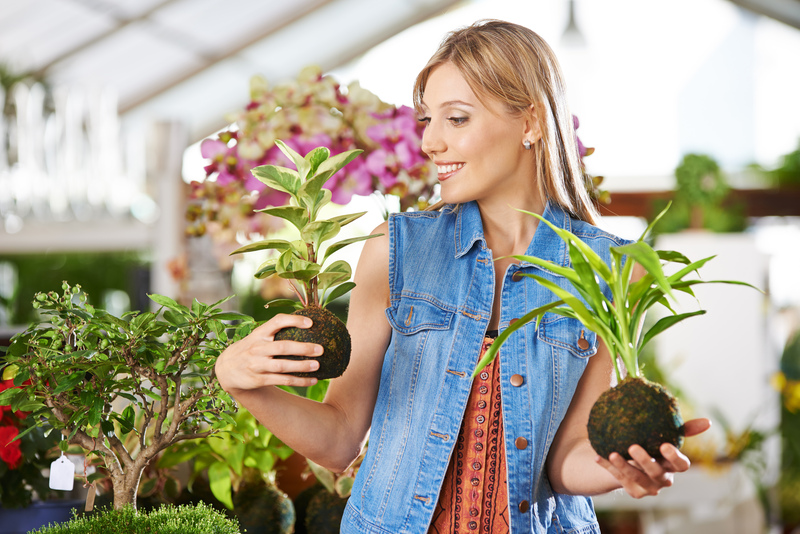Greenhouse vs. Polytunnel: Optimal Gardening Solution
Posted on 18/04/2025
Whether you are a seasoned gardener or a beginner looking to improve your gardening game, understanding the best structures for plant cultivation is crucial. Greenhouses and polytunnels offer distinct advantages and disadvantages that can impact your gardening success. This guide delves into the nuances of greenhouses and polytunnels to help you identify the optimal gardening solution for your needs.
Understanding Greenhouses
Greenhouses are permanent structures typically made from glass or polycarbonate. They provide a controlled environment conducive to plant growth, regardless of external weather conditions. Their primary function is to protect plants from adverse weather and pests while maintaining optimal temperature and humidity levels.

Advantages of Greenhouses
One of the major benefits of greenhouses is their durability. Constructed from robust materials, they can withstand harsh weather conditions such as heavy snow, strong winds, and hail. Additionally, greenhouses offer excellent insulation, maintaining a stable environment that is ideal for year-round cultivation.
Greenhouses also provide a high level of protection against pests and diseases. Due to their solid structure, it is easier to control and monitor the internal ecosystem, significantly reducing the likelihood of infestations.
Challenges with Greenhouses
The most significant drawback of greenhouses is their cost. High-quality greenhouses are a considerable investment, with the price increasing even further if you choose advanced features such as automated ventilation and heating systems. Additionally, greenhouses require more maintenance than polytunnels, including regular cleaning and possible repairs.
Understanding Polytunnels
Polytunnels, also known as hoop houses, are semi-permanent structures typically constructed from a metal frame covered with a polythene sheet. They offer a more affordable alternative to greenhouses and are increasingly popular among gardeners looking for cost-effective solutions.
Advantages of Polytunnels
Polytunnels are considerably less expensive to purchase and install compared to greenhouses. Their design allows for quick assembly and disassembly, making them highly versatile for seasonal use.
Polytunnels offer ample space for a variety of gardening activities. Their flexible structure can be easily adjusted to accommodate different plant types and growth stages. This adaptability is particularly beneficial for crop rotation and expanding cultivation areas.
Challenges with Polytunnels
Despite their benefits, polytunnels have a few drawbacks. They are generally less durable than greenhouses, making them more susceptible to damage from strong winds and heavy snowfall. Additionally, the polythene covering can degrade over time, requiring occasional replacement.
Polytunnels also offer less insulation compared to greenhouses, which can result in temperature fluctuations. This can affect plant growth, particularly during extreme weather conditions.
Pros and Cons Summary
Greenhouses:
- Pros:
- Durable and long-lasting
- Excellent insulation
- High level of pest and disease protection
- Cons:
- High initial cost
- Requires regular maintenance
- Limited flexibility
Polytunnels:
- Pros:
- Affordable
- Quick to assemble and disassemble
- Versatile and flexible
- Cons:
- Less durable
- Reduced insulation
- Polythene cover requires replacement
Tips for Choosing Between Greenhouses and Polytunnels
1. Consider Budget:
- If you have a limited budget, a polytunnel may be the better option. However, if you are willing to invest more for a long-term solution, a greenhouse is ideal.
2. Evaluate Space:
- Check the available space in your garden. Greenhouses are permanent and require a dedicated area, while polytunnels offer more flexibility in terms of placement.
3. Assess Climate:
- In regions with harsh winters, a greenhouse will provide better protection and insulation. For milder climates, a polytunnel should suffice.
4. Determine Purpose:
- Identify your primary gardening goals. For year-round cultivation of a diverse range of plants, a greenhouse is better suited. For seasonal gardening or specific crops, a polytunnel is often more appropriate.

Key Takeaways
- Greenhouses are durable and provide excellent environmental control but come with higher costs and maintenance requirements.
- Polytunnels offer a cost-effective and flexible alternative, but they are less durable and provide less insulation.
- Making the right choice depends on your budget, available space, climate, and specific gardening goals.
Conclusion
In the debate of greenhouse vs. polytunnel, there is no one-size-fits-all answer. Each structure has its unique advantages and challenges. By assessing your gardening needs, budget, and climatic conditions, you can make an informed decision that will provide the optimal gardening solution for you. Happy gardening!












